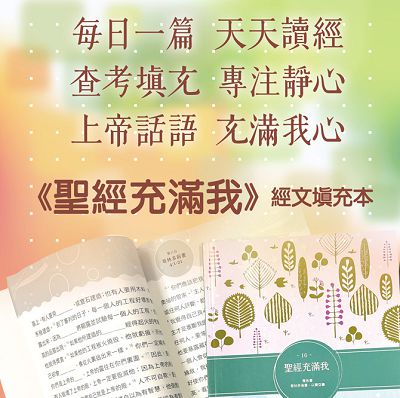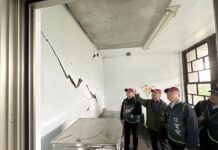Retrocession vs. Reinvasion: A look at Taiwan’s Retrocession Day
Reported by staff reporters
Written by Lydia Ma
October 25 is “Retrocession Day” in Taiwan, a holiday created by the KMT government after it took over Taiwan following Japan’s defeat by Allied forces at the end of World War II. This term literally means “bright” and “return” in Chinese and aptly describes how the KMT government perceived the impact of Japanese rule over Taiwan in contrast to its own rule over this island.
But many people in Taiwan would beg to differ based on their experiences with the KMT government soon after it took over Taiwan. For these folks, the KMT government in the 20th century was much worse than the Japanese government. Hence, if there is anything worth remembering about October 25, it is that this day marked the beginning of another foreign invasion of Taiwan.
Teachers divided over whether history curriculum is appropriate
According to the official high school history curriculum set by the Ministry of Education for 2009, the proportion of Taiwanese history, Chinese history, and world history for the 10th and 11th grades are 1.0, 1.5, and 1.5 respectively.
Commenting on this structure, former Academia Historica President Dr. Chang Yen-Hsien said high school history books should be written with Taiwanese youths in mind and this is a bad arrangement because it doesn’t help students understand their country better.
While some teachers may argue that it’s inappropriate to bring politics into the classroom and there ought to be delineation between politics and culture, Chang is not convinced.
He went on to use the way U.S. history is taught to youths to make his point: Though most Americans are of European or British descent, U.S. history textbooks don’t include European or British history. Instead, European history and British history are taught as components of world history. In contrast, Taiwanese textbooks give a great deal of attention to Chinese history, even exceeding Taiwanese history. In response to this trend, Chang proposed that Chinese history should not only be de-emphasized, but also re-classified as a unit within high school world history curriculum.
Awakening Taiwanese identity through new anthems and flags
Fighting against this backdrop and confusion is Taiwan Teachers’ Alliance, a coalition of teachers who believe in the need of promoting home-grown Taiwanese heroes, and distinctively Taiwanese national anthem and national flag to highlight Taiwanese people’s sense of their unique identity.
To this end, Taiwan Teachers’ Alliance held a contest recently and invited the public to participate and express their views and identity by using their imaginations to create a new flag and a new anthem for Taiwan.
Held at Liu-Yuan Presbyterian Church on August 14, 2010, this contest drew a significant number of contestants. Each group of contestants designed its own version of Taiwan’s flag and anthem and drew inspiration from folk heroes such as Deng Nan-jung, Rev. Thomas Barclay, Rev. William Sia, Yoichi Hata, etc. as reference material. The winning group, a team including members from various churches in Taichung area, took home a cash prize of NT$100,000.
Replacing “Retrocession Day” with “Armistice Day” instead
The term “retrocession” can only be accurate from the standpoint of a colonizer who seeks to discredit whoever ruled a place before he came along, explained Taiwan Theological College and Seminary Professor of Church History, Dr. Cheng Yang-en.
This term was used by the KMT government in Taiwan’s case to discredit Japanese occupation and achievements in Taiwan when KMT lost a civil war in China was forced to retreat and settle in Taiwan. Prior to that time, whether Taiwan belonged to China was a non-issue.
Cheng argued that the term is a propagandistic misnomer because Taiwan’s fate after the arrival of KMT included tragic events such as the 228 Massacre and a period now known as White Terror and brutalities that Taiwanese people never experienced under Japanese rule. That is the reason why some Taiwanese are renaming “Retrocession Day” as “Armistice Day” instead.
An elusive sense of nationalism
Tainan Theological College and Seminary professor and history expert Wang Jen-wen remarked that Taiwanese people’s predicament is very unique as few people in the world would find themselves at a loss of how to state their nationality. She added that Taiwanese people often experience a sense of awkwardness no matter how they state their nationality.
“To say “I am Chinese” would be false, because I’m not a citizen of the People’s Republic of China. I could say “I am Taiwanese” but there’s no record of a “country” with the name “Taiwan” in the world, at least not officially. To say “I am a citizen of the “Republic of China” (R.O.C.) would be even more preposterous as the use of this name has virtually been discontinued internationally and its government’s legality questioned among some circles,” Wang said.
Much soul-search remains to be done and it will invariably culminate in the need to review and redraft Taiwan’s constitution. But for now, as the nation prepares to celebrate the 100thanniversary of “R.O.C.” next year, Wang feels that the recent turn of events, especially the Ma administration’s controversial rapprochement with Beijing, have further accentuated this sense of awkwardness in defining what it means to be Taiwanese.
“Ironically, those who really advocated and defended a distinct Taiwanese identity and autonomy for this country apart from China were persecuted and treated as traitors by the KMT – the very party that started this country. And the two most prominent advocates of a distinct and autonomous Taiwanese republic – former presidents Lee Teng-hui and Chen Shui-bian – most likely will not be invited to attend government-sponsored celebrations next year.”






